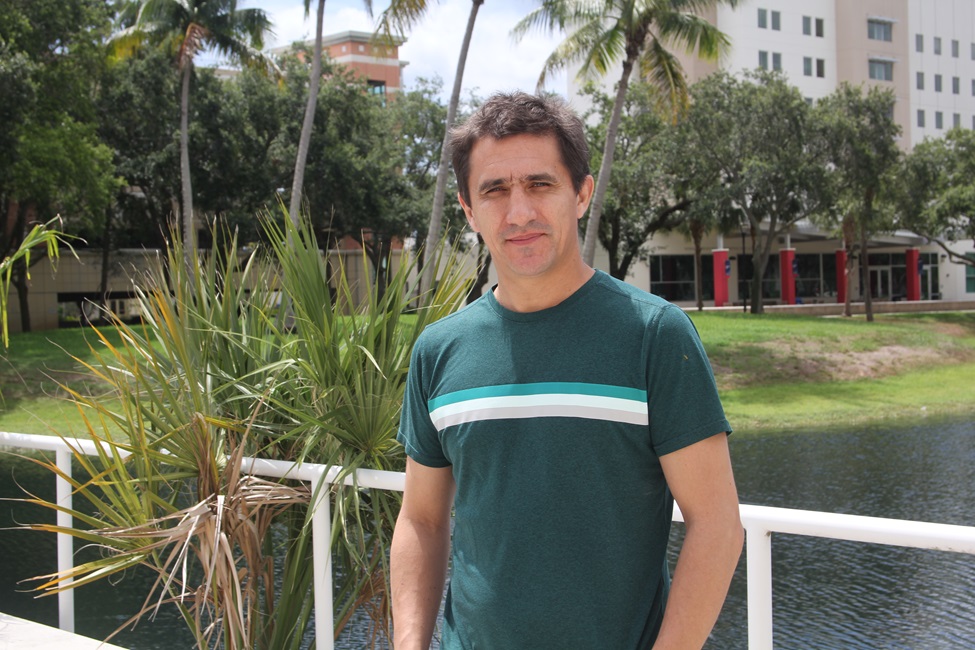New Parasite Revealed Amid Decline of California's Channel Island Fox

A San Miguel Island fox (Photo credit: Stacy Baker, National Park Service)
California’s Channel Islands are home to the Channel Island fox (Urocyon littoralis), one of the smallest and most cherished species of island fox in the United States. Although no longer on the Endangered Species List, they remain a species of special concern due to their ecological importance.
In the 1990s, the San Miguel Island fox nearly went extinct, dropping to just 15 individuals. A recovery program restored their numbers by 2010. However, from 2014 to 2018, the population fell to 30% of its peak right after a new acanthocephalan parasite, commonly known as thorny-headed worms, was identified on the island. This also occurred while a multi-year draught heated San Miguel Island, making it harder to identify the impact of the new parasite on San Miguel foxes.
To identify this parasite and determine the pathologic consequences of its infection on the health of foxes, a highly collaborative scientific effort, including a Florida Atlantic University researcher, used morphological and molecular methods to identify acanthocephalan parasites. They also used an extensive record of island fox necropsies and associated parasite collections to investigate the impact of the acanthocephalan parasite on the health of foxes at an individual and population level.
Results of the study, published in the International Journal for Parasitology, identify the parasite as Pachysentis canicola, a common acanthocephalan in multiple carnivore species in mainland North America. The parasite was detected in 69% of the necropsied foxes from San Miguel Island and was not found in any of the other five Channel Island fox subspecies.
Health issues linked to the acanthocephalan parasite, such as severe intestinal damage and inflammation, were seen in 47% of infected foxes. Other parasites did not significantly impact the health or survival rates of San Miguel Island foxes until the acanthocephalan arrived. After 2018, improved rainfall may have helped body condition recover, but it remained 27% lower than before the acanthocephalan outbreak, indicating that both environmental factors and parasites affect fox populations.
“We suspect that this parasite likely arrived on the island through infected arthropods such as insects inadvertently transported by humans,” said Ale Aleuy, DVM, MPVM, Ph.D., senior author and an assistant professor in the FAU Department of Biological Sciences within the Charles E. Schmidt College of Science. “This discovery raises concerns about the impact of human activity on isolated ecosystems and underscores the importance of monitoring parasitic infections in vulnerable wildlife populations.”
Researchers used detailed fox capture-recapture data from 4,269 captures of 846 foxes to investigate population health and demographic trends of foxes before and after the parasite was detected. They analyzed and monitored changes in body condition and weight from 2006 to 2022. Before the acanthocephalan arrived, the foxes had good health and low mortality despite other parasites.
“This parasite attaches to the intestinal wall of its host, which is particularly problematic for heavily infected foxes that exhibited more significant health issues such as emaciation, enteritis, and in some cases, death,” said Aleuy. “After the parasite’s arrival, foxes showed poorer body condition and lower weight, which worsened during drought conditions. This highlights the importance of understanding this parasite’s life cycle and its impact on fox health, as well as preventing its spread to other Channel Islands.”
Environmental stress may influence disease dynamics, and while foxes can survive with P. canicola in good conditions, they may need extra support during droughts.
“The acanthocephalan parasite did pose serious health challenges for the foxes, leading to issues like weight loss and intestinal complications. However, after the drought, we’ve seen a positive shift. While their condition is still not back to pre-parasite levels, the overall health of the foxes is stabilizing, and they are showing signs of improvement,” said Aleuy. “This resilience gives us hope for their continued recovery.”
The researchers suggest that it’s also possible that P. canicola was present before 2012 but went undetected, potentially due to changes in fox diets increasing their exposure to intermediate hosts.
“Implementing appropriate management strategies is crucial to ensuring the health and longevity of this important species of fox,” said Aleuy. “Controlling the invertebrates that spread the parasites might help, especially if they aren’t native to the island.”
The main goal is to prevent the parasite from spreading to other Channel Islands. Findings of this study highlight the importance of biosecurity in the Channel Islands National Park and more research on P. canicola and its impact on fox populations.
Study co-authors are Leslie W. Woods, DVM, Ph.D., University of California-Davis; Benjamin J. Padilla, Ph.D., Oregon Department of Fish and Wildlife; Dennis Richardson, Ph.D., Quinnipiac University; Juliann T. Schamel, and Stacy Baker, Ph.D., Channel Islands National Park; Martín García-Varela, Ph.D., Universidad Nacional Autónoma de México; Charlotte Hammond, Ph.D., and Sarah P. Lawson, Ph.D., Quinnipiac University; Jasmine N. Childress, Ph.D., Stanford University; Jason Rohr, Ph.D., University of Notre Dame; and Kevin D. Lafferty, Ph.D., University of California, Santa Barbara.
This work was supported by the Morris Animal Foundation through a Fellowship Training Grant awarded to Aleuy; the U.S. Geological Survey Ecosystems Mission Area, Natural Resources Preservation Program, and Pathways program awarded to Childress; the National Science Foundation, Graduate Research Fellowship (Grant No. 1650114) and University of California, Santa Barbara, Schmidt Family Foundation Research Mentorship Award.

Ale Aleuy, DVM, MPVM, Ph.D., senior author and an assistant professor in the FAU Department of Biological Sciences.
-FAU-
Latest News Desk
- FAU Researchers Make Great 'Strides' in Gait Analysis TechnologyA first-of-its-kind study explored whether more accessible technologies such as a 3D depth camera could accurately measure how people walk, offering a practical alternative to traditional gait analysis tools.
- FAU Establishes Professorship in Jain StudiesThe Department of Philosoph recently announced the establishment of the Bhagavan Sambhavnath Endowed Professorship in Jain Studies.
- FAU Historian Traces How U.S. Nursing Homes Evolved into Big BusinessA historian explores how the Americana Corporation shaped modern nursing homes, revealing how architecture tied aging, care and profit into a system that still defines long-term care in the U.S. today.
- Notice of Proposed Changes to Non-Resident Tuition FeesFlorida Atlantic now considering a tuition adjustment for non-resident students to begin in Fall 2026.
- FAU Hosts 'Engineer Your Future Day'Florida Atlantic University's College of Engineering and Computer Science recently hosted "Engineer Your Future Day" at the Carole and Barry Kaye Performing Arts Auditorium.
- Where a Child Lives - Not Just Diet - Raises Type 2 Diabetes RiskFAU researchers found poor walkability, litter, and reliance on assistance programs are strongly linked to type 2 diabetes risk in young children, based on a large nationwide study.






